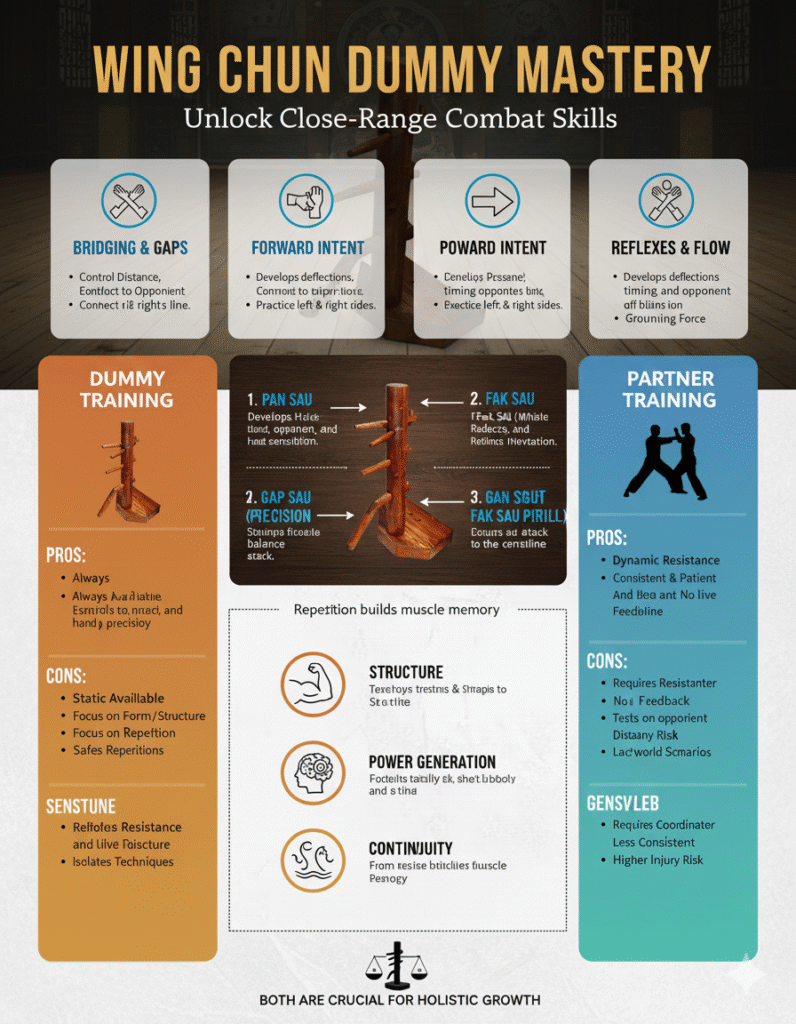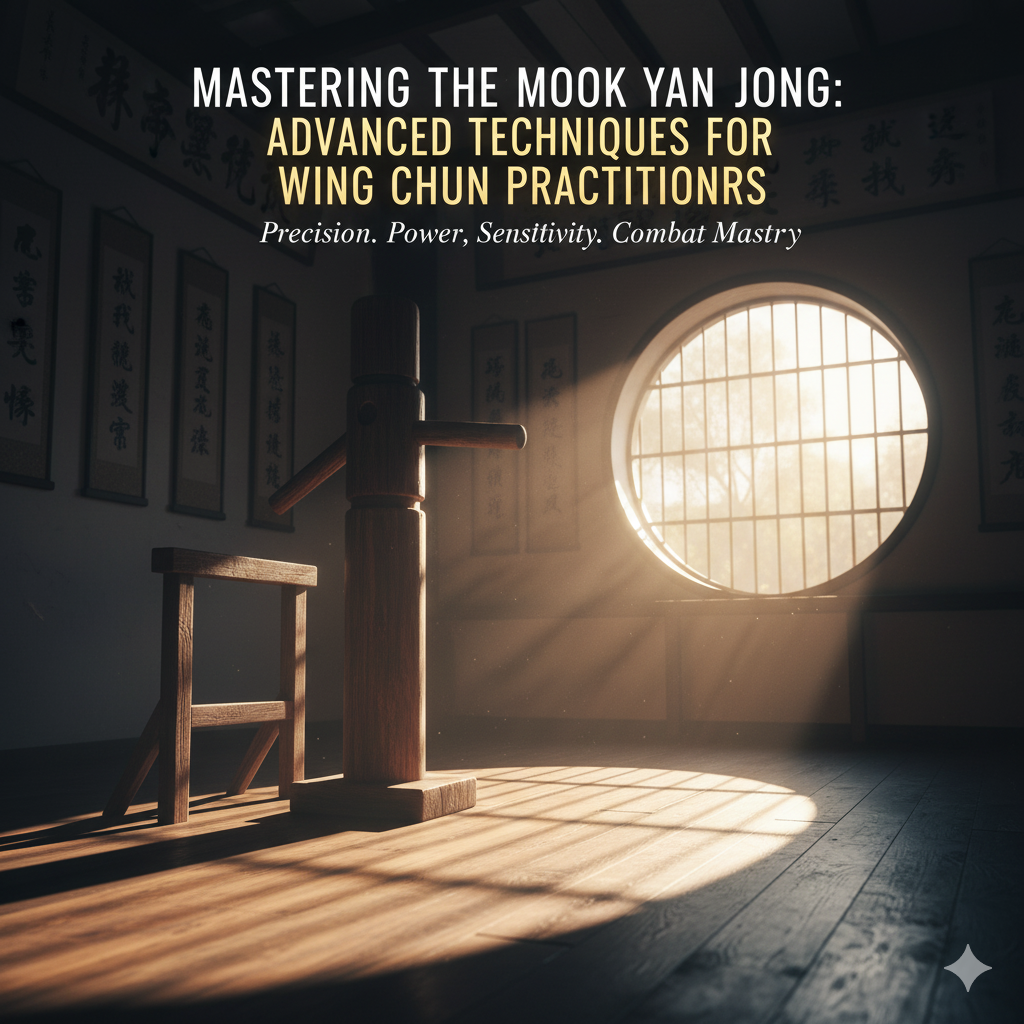It’s crucial to understand that comparative and advanced training contexts in Wing Chun are not isolated concepts;
they are deeply intertwined and mutually reinforcing.
Comparative analysis helps us discern the most effective advanced training methods,
while advanced contexts provide the rich, real-world application necessary for meaningful comparison.
For example, you might compare different approaches to Chi Sao (a comparative approach) to determine which method best develops the sensitivity and responsiveness required for advanced, free-flowing sparring (an advanced context).
This iterative process of comparison and advancement is what truly propels a Wing Chun practitioner towards mastery.
It’s not enough to simply learn the forms; one must constantly evaluate and refine their understanding and application through rigorous, varied training.

Videos are added as random thoughts 💭 💭 💭
This dynamic approach ensures that the art remains alive, adaptable, and effective, rather than becoming a rigid, dogmatic system.
By embracing both comparative and advanced training,
Wing Chun practitioners can continuously evolve their skills, deepen their understanding of the art, and unlock its full potential.
It’s a continuous feedback loop: insights from comparing different techniques inform how you approach advanced drills,
and the results from those advanced drills provide new data for further comparison and refinement.
Practical Applications and Real-World Impact in Wing Chun
The true measure of any martial art lies in its practical application.
For Wing Chun, understanding and implementing comparative and advanced training contexts translates directly into tangible improvements in self-defense capabilities and overall martial prowess.
Let’s explore how these concepts manifest in real-world scenarios:
Enhanced Adaptability in Self-Defense:
By engaging in comparative training, a Wing Chun practitioner learns to recognize and counter a wider range of attacks and fighting styles.
If you’ve compared how different Wing Chun lineages handle a specific attack,
or even how a boxer’s jab differs from a Karate punch, you develop a more versatile defensive framework.
Advanced training, particularly through dynamic Chi Sao and live sparring,
hones your ability to adapt instantaneously to unpredictable situations.
This means your responses become less about memorized sequences and more about fluid, principle-based reactions, making you a far more effective self-defender.
Deeper Understanding of Principles: The constant comparison of techniques and the rigorous demands of advanced drills force a practitioner to internalize Wing Chun’s core principles at a profound level.
It’s no longer just about performing a Bong Sao;
it’s about understanding the underlying energy, structure, and intent behind it.
This deep understanding allows for improvisation and innovation, enabling you to apply Wing Chun effectively even in novel situations that weren’t explicitly trained.
This is the difference between knowing a technique and truly embodying a principle.
Improved Sensitivity and Reflexes: Advanced Chi Sao, especially blindfolded drills, significantly refines a practitioner’s tactile sensitivity and reflexes.
This heightened awareness allows you to feel your opponent’s intentions and movements through contact, reacting almost instinctively.
This ‘listening hand’ ability is a hallmark of advanced Wing Chun and is crucial for controlling an engagement and exploiting openings.
The comparative study of different Chi Sao approaches can further refine this sensitivity, as you learn to discern subtle differences in pressure and flow.
Mental Fortitude and Composure: The challenges presented by advanced training contexts,
such as sparring against multiple opponents or under pressure, build immense mental fortitude.
You learn to remain calm and focused amidst chaos, making clear decisions under duress.
This mental resilience is invaluable not only in self-defense situations but also in navigating the stresses of daily life.
The comparative process of evaluating different training methods can also instill a critical, analytical mindset that extends beyond the kwoon.
Holistic Development: Ultimately, the integration of comparative and advanced training contexts leads to a more holistic development of the Wing Chun practitioner.
It’s not just about physical technique; it encompasses mental clarity, emotional control, and a deeper philosophical understanding of the art.
This comprehensive approach ensures that Wing Chun remains a living, evolving system that empowers individuals both inside and outside the training hall.
These practical applications underscore the importance of moving beyond a superficial understanding of Wing Chun.
By actively engaging in comparative analysis and pushing the boundaries with advanced training, practitioners can unlock the true power and adaptability of this remarkable martial art.
It’s a journey of continuous refinement, where every comparison and every advanced drill brings you closer to mastery.
The Path to Mastery: A Continuous Evolution
As we look to the future of Wing Chun, the principles of comparative and advanced training contexts will become even more critical.
The martial arts landscape is constantly evolving, with new challenges and insights emerging.
By systematically evaluating different approaches and embracing cutting-edge methodologies,
Wing Chun practitioners can ensure that the art remains relevant, effective, and continuously adaptable to the demands of an ever-changing world.
My journey through understanding and applying these contexts in Wing Chun has been incredibly insightful.
It has reinforced my belief that true mastery is not a fixed destination but a continuous journey of exploration, refinement, and adaptation.
By consciously applying these frameworks, we can move beyond simply acquiring techniques to truly embodying the principles of Wing Chun,
fostering a lifelong passion for learning and self-improvement.
The power to shape our own growth, and to contribute to the evolution of this profound martial art,
lies in our hands, guided by the intelligent application of these training principles.



